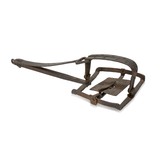 |
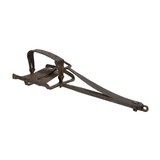 |
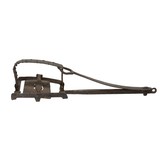 |
 |
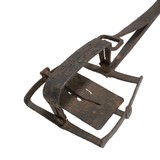 |
 |
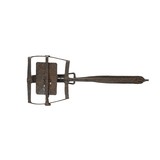 |
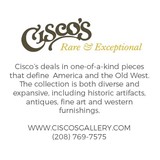 |

Isaac Veal Hudson Bay Fur Trade Trap
Guns International #: 102797790 Seller's Inventory #: AJ1095
Category: Traps - Modern & Collectible - Collectibles - Sporting
Seller's Information
When emailing or calling sellers direct, please mention that you saw their listing on GunsInternational.com
Seller: Cisco's Gallery
Company: Ciscos Gallery
Member Since: 9/2/16
First Name: Sam
Last Name: Kennedy
State: Idaho
Zip: 83814
Country: United States
Phone: (208) 769-7575
Fax: (208) 769-7575
Platinum Seller
Number of Active Listings: 560
Total Number of Listings: 6977
Seller: Private Seller
Return Policy: 3 day inspection and return policy on used guns.
Payment Types Accepted: Visa, Mastercard, certified funds, cashiers checks, money orders, and personal checks (items shipped when cleared). 3% surcharge on firearm purchases made with a credit card.
About Us: Cisco’s Rare & Exceptional deals in one-of-a-kind pieces that define America and the Wild West. The collection is both diverse and expansive, including historic antique western firearms, artifacts, antiques, fine art, and western home furnishings. Our store, located in scenic Coeur d’Alene, Idaho, is filled from floor to ceiling with pieces that spark romantic tales of the western frontier. Cisco’s inventory of authentic Native American art and artifacts is among the finest in the world featuring Navajo rugs, baskets, beadwork, totems, pipes, southwest jewelry and more!
Description:
Very rare 19th century Hudson Bay fur trade trap, signed IV, attributed to Isaac Veal (English, 1796-1862), hand forged iron with leaf spring action for trapping beavers and otters. 28" x 12" x 6".
The trap is marked “IV” in a cartouche on the spring at the base of the eye. Isaac Veal, a blacksmith by trade, born in Portsmouth in Southern England the town of Ringwood in 1796 and died there in 1862.
Collectors have found and reported perhaps two dozen traps marked “IV.” All are English-style single-spring traps of large size with distinctive construction features. All but one reported example has been found in the region of the United States – Canadian border between New England and Quebec.
While made in the general pattern of early muskrat traps found in the New World, these traps are very large and heavy. The three traps in the museum’s collections average 21 inches and five pounds in weight. The jaws, when open, measure approximately 6 inches x 7 inches. All are fitted with individually attached teeth, a common feature of English otter traps. The jaw posts and the leaf spring are attached to a heavy iron keel with iron wedges through slots. The end of the keel or base is forged into a ring for attaching a chain.
The most distinctive feature of these traps is the jaws. They are taller at the front than at the back, or spring, side. This permits the spring eye to hold the jaws together more firmly. However, when the jaws are open they resemble the outline of a truncated heart, and the rather delicate trap base follows the same shape.
These traps were manufactured to Mr. Veal’s own design in the period between 1820 and 1860. The large size makes them suitable for catching beavers or the largest otters. The heavy weight would have made them unsuitable for packing into the forest on snowshoes in pursuit of wolves or fishers. Their wide distribution in French Canadian territory indicates they were probably sold by a large fur trading company, most likely the Hudson Bay Trading Post. There is a reported ax marked “IV” that was found at the site of an HBC post on Lake Superior.
During the 1820s the HBC moved aggressively into eastern Canada following its 1821 merger with the NorthWest Co. Mr. Veal would have been about 25 years of age then, certainly finished with his blacksmithing apprenticeship and ready for bigger projects.
These traps were likely not intended for sale to Indian trappers, who generally preferred deadfalls and snares, but rather were intended for sale to the indigenous white rural population. Mr. Veal’s death coincided with the successful development of Newhouse’s trap, which after 1860 became the standard pattern sold by the HBC. (Museum of the American Fur Trade, Volume 38, Spring 2002)
Family Owned & Operated
Cisco’s Gallery deals in the rare, exceptional, and one-of-a-kind pieces that define the history of America and the Old West. Our pieces range from American Indian to Cowboy Western and include original items of everyday life, commerce, art, and warfare that tamed America’s frontier. Our 14,000 square foot gallery opened in 1996 in beautiful Coeur d’Alene, Idaho.
Personal Service
Cisco’s operates on old fashioned values – honesty and integrity, and all of our items are backed by our money back guarantee. We appreciate the opportunity to earn your business. Whether you desire assistance with a jewelry purchase, choosing a gift, identification, or even selling – we hope to be your trusted source.
Price: $5,500.00